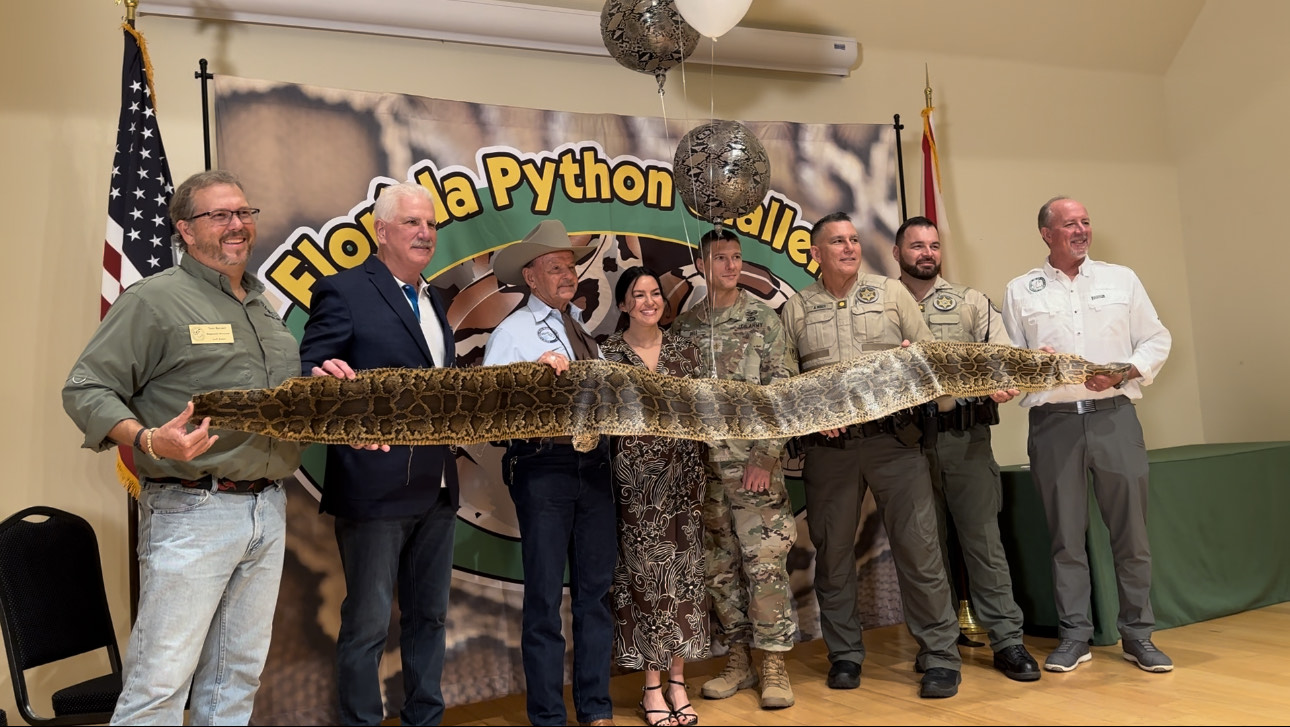HOMESTEAD, FL—Registration for Florida's annual ten-day Python challenge opened Thursday morning, Lieutenant Governor Jeanette Nuñez announced, pleased that everyday citizens can help catch and remove the invasive species from the South Florida Everglades.
From August 9th to 19th, for the eleventh year in a row, expert and novice python catchers nationwide can travel to the Everglades in hopes of catching the most Burmese pythons. First, interested participants must take a 45-minute online course and quiz to prepare them for the task ahead, and then pay a $25 fee to register.
Why join the Python challenge? Because there is a $10,000 grand prize for most pythons removed and an additional $15,000 to be parceled out to runner-ups and those who catch the longest snake, and—more importantly—the Burmese Python jeopardizes the already fragile Everglades ecosystem, widely considered to be the most threatened National Park in the country.
"Burmese pythons wreak havoc...compete with natural species...and can spread diseases," Nuñez told excited onlookers at a Miami-Dade press conference.
The most severe declines in native Everglades species occur in its remote southernmost regions where pythons have been established the longest. A 2012 study found that raccoon populations had declined 99.3 percent, opossums 98.9 percent, and bobcats 87.5 percent since 1997, the USGS reports. Marsh rabbits, cottontail rabbits, and foxes effectively disappeared over that time.
Burmese pythons can grow over 20 feet long and females can lay 50-100 eggs at a time, leading to exponential growth since their 1979 introduction to the swampy, 1.5 million-acre Everglades. They were originally brought over as "exotic pets" in the 1980s when Miami's market for illicit animals was booming.
However, many wrapped up in the exotic pet trade weren't exactly the most responsible owners, so when their new python began to grow a little too large, they would release it into the nearest wild area—the Everglades. But many experts think the Burmese python population in the Everglades exploded in 1992 after Hurricane Andrew decimated a python breeding facility, freeing countless snakes into the nearby area.
Now, it's uncertain how many pythons live in Florida, though at last year's python challenge, over 200 were caught by the 1,050 participants from 35 different states.
"Since the Governor took office, we have been able to remove over 13,000 pythons," Nuñez said, explaining that the annual python challenge allows experts to gather much-needed size and location data, and allows citizens to engage directly in Everglades restoration.











